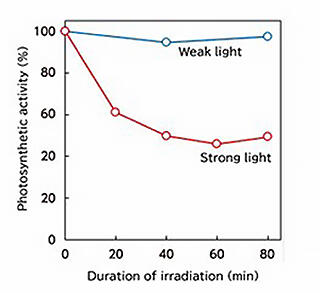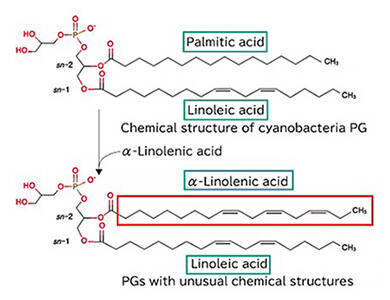Global momentum towards the creation of a decarbonized society is increasing. In recent years, extensive research has been conducted on the production of fatty acids, the raw materials for biofuels, from microalgae. Fatty acids, which are both also used to synthesize lipids and are the major components of the cell membrane of living organisms, play a vital role in the body. However, polyunsaturated fatty acids (those possessing two or more double bonds) inhibit photosynthesis, making it difficult to increase production, and the molecular mechanism underlying this inhibitory action had not yet been clarified.
A research group consisting of Haruhiko Jimbo, Assistant Professor, Graduate School of Arts and Sciences, The University of Tokyo; Makiko Aichi, Associate Professor, College of Bioscience and Biotechnology, Chubu University; and others focused on "photoinhibition", which refers to the inhibition of photosynthetic activity following exposure to strong light. They analyzed the effects of six fatty acids with different numbers, positions, and binding modes of double bonds on photosynthesis following exposure to strong light. Results revealed that the uptake of polyunsaturated fatty acids into specific membrane lipids causes photoinhibition. In addition, they confirmed that α-linolenic acid, a type of polyunsaturated fatty acid, specifically replaces palmitic acid, a saturated fatty acid bound to a phospholipid called phosphatidylglycerol (PG) present in chloroplasts.
The research group is currently developing new fatty acid molecular species that are able to control photosynthesis more efficiently. If these research results can be applied in practical settings, biofuel production could be increased by suppressing the production of polyunsaturated fatty acids and the incorporation of fatty acids into PG during fatty acid production. These findings are also expected to contribute to the development of agricultural chemicals with a low environmental impact.






